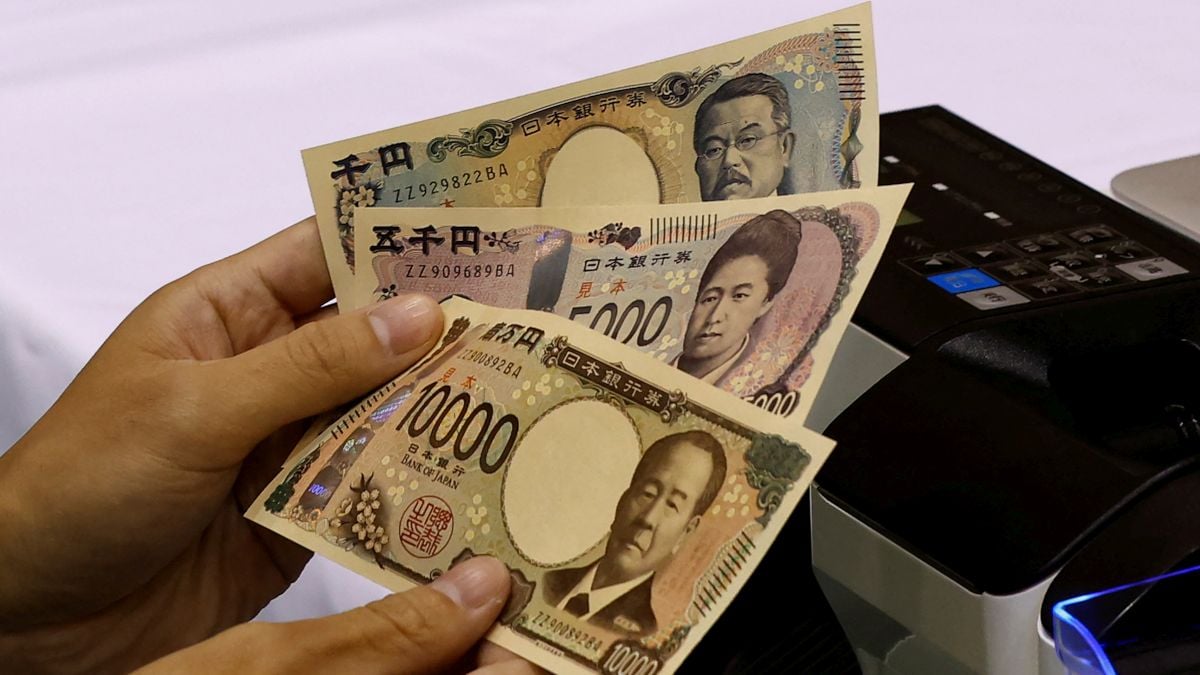
WHY IS JAPAN INTRODUCING NEW BANKNOTES AFTER 20 YEARS?
Japan is set to unveil a new series of banknotes, marking the first significant redesign in two decades. This update to the ¥10,000, ¥5,000, and ¥1,000 notes incorporates advanced anti-counterfeiting technologies and features prominent historical figures.
Since the country issued its first banknote in 1885, there have been 53 different designs. This latest update, effective from July 3, comes as a measure to enhance security and usability amid evolving technological advancements.
What are the new features of the redesigned banknotes?
The upcoming banknotes introduce several innovative features equipped with advanced security features to prevent counterfeiting. One of the most notable advancements is the incorporation of cutting-edge holographic technology, which creates a three-dimensional effect. These include:
- Three-dimensional holographic stripes on the ¥10,000 and ¥5,000 notes that display the portraits from different angles when tilted. The ¥1,000 bill also includes a similar holographic patch at the bottom left corner.
- Enlarged Arabic numerals replacing the previous kanji characters for easier recognition of the face value by people of all ages and nationalities.
- Tactile marks to help visually impaired individuals identify the denominations by touch.
- Intaglio printing and watermarks for enhanced authenticity.
In a groundbreaking move, Japan claims to be the first country to utilise holography that creates a 3D rotating effect on the portraits, significantly elevating the notes' security features.
These features are part of Japan’s ongoing efforts to combat counterfeiting, which, despite a significant decline in recent years, remains a concern. In 2020, there were 2,693 counterfeit cases reported, whereas only 681 cases were reported in 2023.
Who are the historical figures featured on the new banknotes?
The new banknotes will prominently feature three influential figures from Japanese history, each chosen for their significant contributions to the nation.
The ¥10,000 note will feature Eiichi Shibusawa (1840-1931), known as the "father of Japanese capitalism." Shibusawa played a pivotal role in the modernisation of Japan’s economy during the Meiji Era.
He was instrumental in establishing the First National Bank in 1873 and founded over 500 companies, including notable names like Sapporo Brewery and Tokyo’s Imperial Hotel. On the back of the ¥10,000 note, the iconic red-brick building of Tokyo Station’s Marunouchi Building is depicted, symbolising the progress and modernisation Shibusawa championed.
The banknotes will be redesigned and issued on July 3, 2024. Bank of Japan
Umeko Tsuda (1864-1929) will grace the ¥5,000 note. Tsuda was a pioneering educator who dedicated her life to improving educational opportunities for women. After studying in the United States, she founded Tsuda University, which remains one of Japan’s most prestigious institutions for women.
The reverse side of the ¥5,000 note features Japanese wisteria flowers, a symbol of the beauty and persistence of Tsuda’s efforts to uplift women’s status in Japanese society.
Also Read | From the Himalayas to Tokyo: How Nepal is helping Japan print its currency notes
The ¥1,000 note will honour Shibasaburo Kitasato (1853-1931), a celebrated bacteriologist known for his contributions to modern medicine. Kitasato co-discovered an antitoxin for diphtheria and was a key figure in the early development of Japanese medical science.
The back of the ¥1,000 note showcases “The Great Wave off Kanagawa”, a famous woodblock print by ukiyo-e artist Katsushika Hokusai, symbolising Kitasato’s impact on global science and medicine.
How will the new banknotes be made available?
The new banknotes will be made available starting Wednesday, July 3, 2024. Initially, they will be distributed to financial institutions, which will then make them available to the public through ATMs and cashier windows.
By the end of March 2025, nearly 7.5 billion new banknotes are expected to be in circulation, with a total of 5 billion banknotes prepared by the end of March 2024. The old banknotes will remain valid for transactions even as the new ones enter circulation.
Banknotes range in value from one thousand yen all the way up to ten thousand yen. Representative Image/Reuters
A survey conducted by the Japanese Finance Ministry indicates that around 80 per cent to 90 per cent of banks, railway stations, convenience stores, and supermarkets will have updated their machines to accept the new banknotes before the release date. However, street vending machines and restaurant ticketing machines may take longer to adapt to the new currency.
What kind of public impact are we looking at in Japan?
The introduction of the new banknotes comes at a time when Japan is grappling with a shift from cash to cashless payments.
As of 2023, cashless payments accounted for about 40 per cent of transactions in Japan, which lags behind other countries such as the UK, Canada, the US, China, Singapore, and South Korea, where cashless transactions exceed 50 per cent of total payments.
The redesigned banknotes reflect a balance between maintaining traditional cash systems and encouraging a move towards more digital payment methods.
The launch of the new banknotes has also posed challenges for local businesses. For example, Fukumen Tomo, a ramen shop in Tokyo, had to invest approximately 300,000 yen to replace ticket machine parts to accept the new currency, reported Nippon News.
Also Read: What's the 'beni koji' death scandal in Japan?
The owner, Tomonori Oikawa, expressed concerns about the financial burden of these updates and the potential need to raise menu prices. To support small businesses, Tokyo’s Katsushika Ward will provide subsidies of up to 300,000 yen to cover half of the costs associated with adapting to the new banknotes.
With inputs from agencies
2024-07-01T13:15:12Z dg43tfdfdgfd